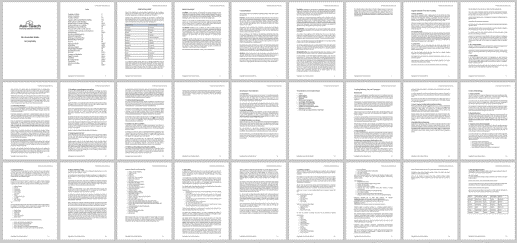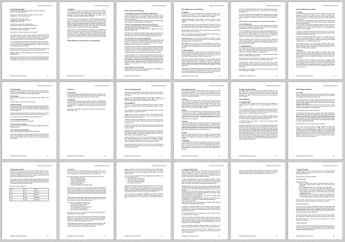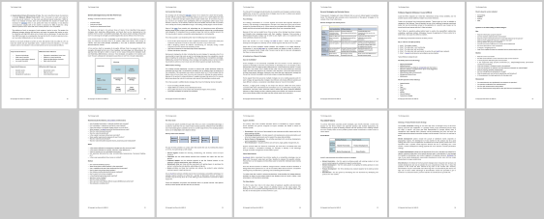“Change is hard because people overestimate the value of what they have and underestimate the value of what they may gain by giving that up. ”
In our fast-paced, connected and competitive World organizations are responding to (or initiating) change at unprecedented levels, including:
Changes to performance management process or company culture
Acquisitions & mergers
Office relocation or consolidation
Diverstitures
New product introduction (NPI)
Product line closure
Organisation restructure
Management delayering
IT infrastructure changes
New processes & procedures
We are often surprised when a company invests a significant amount of time, effort and money implementing such a change without investing in an employee 'change-engagement' process at the same time.
It is a well-known fact the success of a change isn't just about how good the idea is, nor how well implemented it was...it needs to have the sustained buy-in from those impacted by it or able to impact the success of it.
Numerous research studies show a lack of engagement to be one of the key factors for why a change failed to deliver anticipated value or results.
Results = Solution x Engagement
There are many available tools and techniques to help an organization identify WHAT to change and HOW to change it (such a Six Sigma, Lean, etc.)...but very few that focus on how to obtain sustained commitment from people so they buy-in to, and support, the change.
How can you build buy-in?
Buy-in is not just about rolling out the 'Change Adoption Curve' and helping people get ready for the way they might feel or react to change...although this can be a useful thing to offer people. It is about a systematic and strategic process of communication and the alignment of systems and structures to help drive required future behaviour.
Such a process should be run in conjunction with any 'change project' effort.
What would such a process look like?
CONVERTS Process
To move from a 'present' state to a 'future' state requires a transition...and a robust process to help people through it. This is why we created the CONVERTS process.
Capacity - the context within which the change is based. A review of the size, scale and scope for the change to help determine those impacted by it and those where buy-in is essential. You only need a critical mass of support for change to be adopted.
Owner - who is leading the change? Is it on their agenda, are they displaying effort, energy and enthusiasm towards it - or have the 'launched' it, only to be working on the next 'big thing'?
Need - is the reason for the change clear? Are people aware of the 'burning platform' and why they MUST change?
Vision - is the future state clear to people? Is it motivational and does it draw them towards it? Are people clear what their day-to-day activities will look and feel like? Do they know what they should be doing 'more of'...or 'less of'?
Engage - have influencing strategies been created for key people who may not willingly engage?
Reinforce - are plans in place over the 'long-haul' so that the change isn't forgotten or seen as a fad?
Track - are measurements in place to show whether people are willingly engaged, rather than engaged because they have to be?
Systems - are the things that drive the 'old' behaviour being adjusted to help drive the 'new' behaviour, such as; recruitment & selection, training, reward & recognition, measure & metrics etc.?
We have extensive tools & techniques to support change.
We have created a comprehensive ‘Guide to Change Management’ - which iincludes advice on the ‘what’, ‘why’ and ‘how’ of building acceptence to change, based extensively on the CONVERTS Model.
We have extensive tools & techniques to FACILITATE change.
We have created a comprehensive ‘Guide to Facilitation Skills’ and a ‘Facilitation Skills Tool Kit’ - which iincludes advice on the ‘what’, ‘why’ and ‘how’ of facilitating change and other critical meetings.
We have extensive tools & techniques for Building Creativity.
We are able to help our clients with building and developing creativity and a creative mindset. In order to stay relevant and at the forefront of an industry or sector, being innovative is critcal. However, we often find people lack the ability, knowledge or skills to be able to do this effectively. Our guide, tools and training on creativity have proven themselves time-and-again to be invaluable to our clients as the struggle to evolve and innovate.
We have extensive tools & techniques for strategy Building .
Building a cohesive and joined-up strategy that works is hard. Many leaders ask for our input and advice on how to be more ‘strategic’, especially when they have had to be ‘tactical’ most of the time.
When it comes to building a strategy you need to start with a set of cognitive skills…to be able to think strategically, and this is where people struggle if they have never been through a strategic thinking process before. Where do you begin?
The great news is there are many tools and techniques that when used systematically, and applied to real situations, can force people to use these important cognitive capabilities.
We have tools, techniques and training to support this process.


















